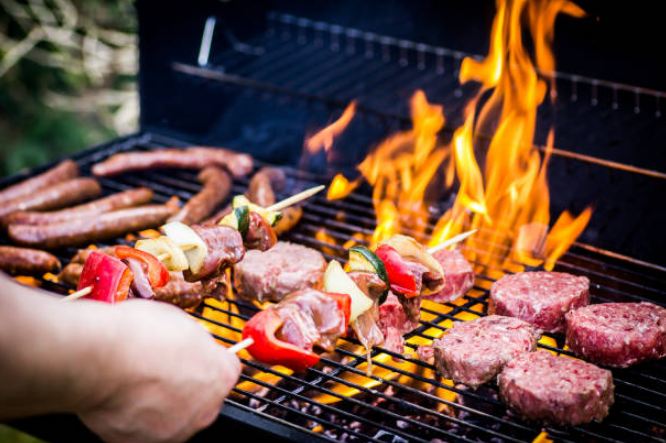The two basics of authentic barbecue are a low cooking temperature and plenty of wood smoke.
You need enough heat to cook the meat (which is the difference between smoke curing and barbecuing) but you need to keep the temperature a bit above the level that meat will register inside when done.
So, let’s take pork for example; it needs to be cooked to an internal temperature of at least 160 degrees Fahrenheit, so you must barbecue it at 180 degrees to 220 degrees Fahrenheit. This same principle works very well for other foods as well.
Grilling is what many inexperienced, “want to be pitmasters” call barbecuing. Actually, grilling in concept is the opposite of barbecuing because of heat.
Much of the time you want the highest temperature achievable in grilling because the purpose is to sear meat on the outside to make it crispy and brown on the surface.
This method is best when used with tender cuts, such as a good steak or chop, which are pretty much free of connective tissue
Usually, the meat used to barbecue is really tough. Spareribs, beef brisket, as well as other cuts require slow cooking at low temperatures to break down their stubborn tissues.
This is the exact reason why they are ideal for barbecuing in the first place. When you barbecue steaks, fish, or vegetables, you do it to add smoky flavor and not because the slow cooking is needed for tenderness.
The smokiness that you desire in barbecue should come from smoldering wood, not from fat or oil dripping on coals or hot metal.
The use of water or other liquids is a bit controversial in barbecue circles. People in the past didn’t add water to their pits in any fashion, and many experts don’t like the idea today.
They say that barbecuing has to be a dry cooking process. The truth is that most methods of barbecuing have always involved the circulation of moisture laden air over food.
This makes the process much wetter than cooking in a traditional oven. Water has a proper place in barbecuing, depending on how it’s used and what you’re cooking.
Traditional barbecue meats benefit from losing moisture as they cook, shrinking their size, but many non -traditional foods can benefit from increased humidity inside the smoker.
As long as you avoid cooking the food with steam instead of smoke, extra moisture can help to prevent lean meat and fish from getting too dry.

